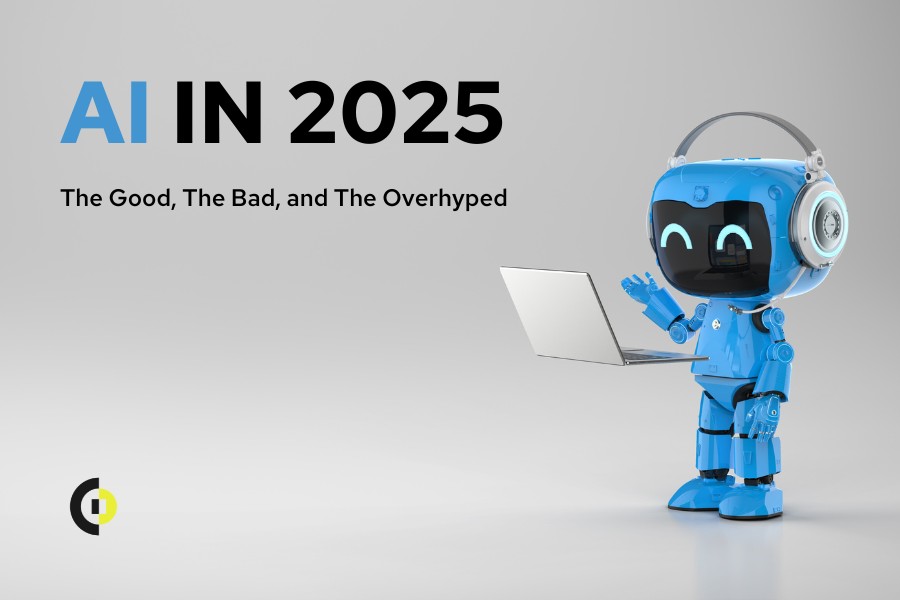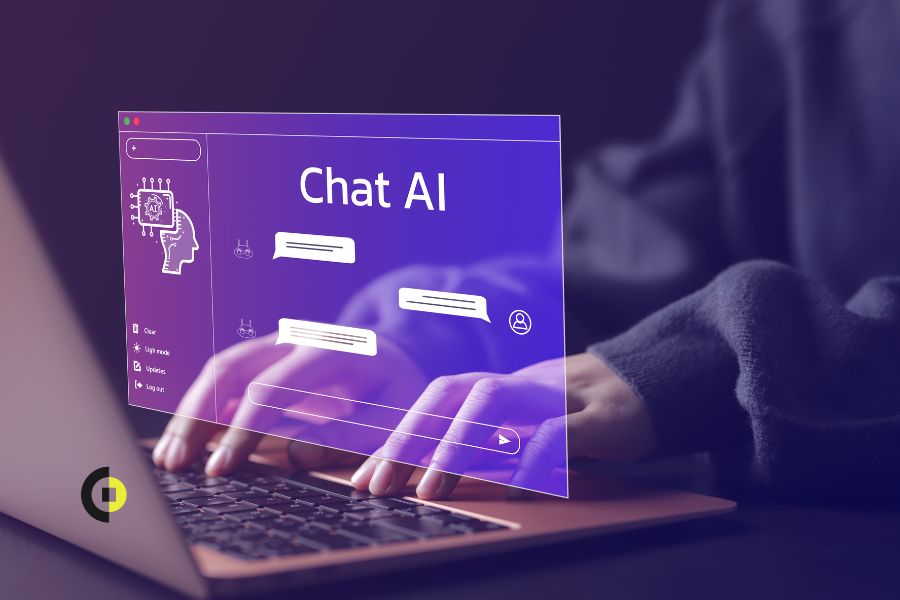Open AI’s public release of Chatbot GPT at the end of 2022 had far-reaching effects on nearly every industry, causing a stir in the world. This innovative technology has generated a buzz, leaving us wondering what the future holds for Chat GPT and similar language models.
Chat GPT is undoubtedly set to revolutionize the tech world. Are you concerned about AI taking over our jobs, or are you excited about the future? Continue reading our blog to learn more about what the future of Chat GPT might look like.
What is Chat GPT?
ChatGPT is a highly advanced AI system that can produce text responses resembling human language. It operates using the GPT (Generative Pre-trained Transformer) model and has been trained on a massive corpus of conversational text. This allows it to provide information and respond to inquiries almost indistinguishable from a human conversation. The most well-known version of Chat GPT is the GPT-3.5 series.
This chatbot system uses NLP (Natural Language Processing) and deep learning to understand and process language. This allows it to perform various tasks, including customer service, which is far more advanced than traditional chatbots. The GPT-3 series is an excellent tool for researchers and developers working on NLP projects, and it has various specific tasks, domains, and applications available for use.
OpenAI has already released several versions of GPT, each with increasing capabilities and performance, and will continue to develop and improve the technology behind Chat GPT. Currently, the Chat GPT AI system does not compare its results to real-world data, but we can expect real-world data integration in the near future.
The technology behind Chat GPT
Chat GPT-3, also known as Generative Pre-training Transformer 3, is a cutting-edge artificial intelligence technology. It allows chatbots to comprehend and generate human-like natural language with remarkable accuracy and fluency. It is the largest language model to date, consisting of 175 billion parameters and the capability to process billions of words in a matter of seconds.
OpenAI has pre-trained a deep neural network with a vast text dataset and fine-tuned it for specific tasks, such as answering questions or generating text, with improved performance. This is the technology that is behind Chat GPT-3. Multiple transformer blocks that process the input text and generate output predictions create the network. The network incorporates self-attention mechanisms, enabling it to weigh the relevance of different words and phrases in the context of the conversation. Additionally, transformers allow Chat GPT-3 to generate coherent text even with limited input.
Chat GPT-3 is a significant advancement in the field of NLP as it uses transformer-based architecture to process vast amounts of data in parallel, leading to a more human-like understanding and generation of text. This technology has numerous uses, such as chatbots, machine translation tools, text summarization software, and more. However, Chat GPT-3 lacks internet connectivity and can only operate using the data it has received during training, limiting its ability to access external information.
The history of Chat GPT
It’s crucial to examine ChatGPT’s history to understand its future prospects. The history of Chat GPT includes some of Silicon Valley’s most prominent names. Elon Musk, Peter Thiel, and other tech investors founded OpenAI, the company behind the creation of Chat GPT, in 2015 as a nonprofit organization. Its goal was to counteract the centralization of AI by making its patents and research available to the public. The company wanted to develop AI “in the way that is most likely to benefit humanity as a whole,” according to the information stated on OpenAI’s website on December 11, 2015.
In 2018, Elon Musk left the board due to a conflict of interest with Tesla AI. In 2019, OpenAI shifted from nonprofit to “capped-profit,” allowing potential profits of 100X for investors, with the remaining money going towards not-for-profit work. That same year, Microsoft invested $1 billion in OpenAI, and the two companies announced a partnership, with OpenAI licensing its technology exclusively to Microsoft. The collaboration enables Microsoft to compete with Google’s AI company, DeepMind.
Since the latest Chat GPT release, Sundar Pichai, the CEO of Google, has taken part in multiple meetings to address Google’s AI strategy in light of the threat posed by ChatGPT. The company also brought in Google cofounders Larry Page and Sergey Brin to address the issue. It was reported that Microsoft planned to use ChatGPT to power its search engine, Bing.
In January this year, Microsoft announced its intentions to invest $10 billion in OpenAI in the upcoming years, giving the tech giant a 75% share of OpenAI’s profits until it recoups the investment and then a 49% stake going forward.
The future of Chat GPT
In recent years, Chat GPT technology has been making waves in various industries. It has the potential to streamline roles and fundamentally change how people create value. At the same time, there are concerns about its impact on human employment. Let’s explore some of the use cases of Chat GPT, its future, and whether or not you should be worried.
Use cases of Chat GPT
- Customer Support – AI-powered chatbots can offer round-the-clock customer support and promptly address customer inquiries. They can significantly improve customer support by providing quick and personalized responses to customer queries and needs.
- Marketing and sales – Chatbots can assist in lead generation, prospect evaluation, and closing deals by guiding customers through the buying process. They can also gather valuable information about potential customers and provide data-driven insights to sales and marketing teams, enabling them to tailor their approach.
- Education – Educators can utilize chatbots to educate and respond to students’ questions in an engaging and appealing way. One potential use of ChatGPT in education is the creation of exams or quizzes.
- Healthcare – AI-powered chatbots can offer customized health recommendations and support in diagnosing medical conditions. Additionally, AI-driven chatbots can also play a role in streamlining administrative tasks, such as appointment scheduling and prescription refills, improving the overall healthcare experience for patients.
- Recruitment – Recruiters can utilize chatbots to automate various aspects of the recruitment process, increasing efficiency and saving time and resources. Additionally, AI-driven chatbots can help to screen and pre-qualify candidates, streamlining the interview process for recruiters.
- Travel – Chatbots can assist travelers in booking flights, hotels, and other travel arrangements quickly and easily. In the future, AI-driven chatbots could provide real-time updates on flight status, weather conditions, and local events, making it easier for travelers to plan their trips and stay informed.
- Entertainment – AI-powered chatbots can offer personalized recommendations for movies, music, and other forms of entertainment. They can also generate complete scripts for movies or shows and write lyrics for songs.
- Programming – ChatGPT can generate code snippets based on specific programming languages and paradigms, allowing developers to write code more quickly and efficiently. It can also help with debugging assistance and code review.
The Chat GPT’s impact on employment
I dared to ask Chat GPT what the worst possible outcome of Chat GPT implementation for human employment is. This is the answer I received: “The worst possible outcome of Chat GPT implementation for human employment is job loss due to automation and AI-powered systems becoming more capable of performing tasks previously done by humans. This could lead to a decrease in demand for certain jobs, as well as a shift in the skills and expertise required for others. However, it is important to note that AI can also create new job opportunities, and that its impact on employment will likely be complex and multifaceted. Additionally, proactive steps can be taken to mitigate any negative effects, such as providing education and training for workers to acquire new skills and adapt to changing job markets.”
Should you be worried about your job?
The rise of AI has sparked fears that technology like Chat GPT will replace many jobs, including programmers, journalists, and creative writers. While it’s true that ChatGPT can generate consistent and coherent responses, it’s still far from being a job killer. In fact, ChatGPT has its limitations. The current quality of output has a lot of misinformation it is less reliable in solving complex problems.
ChatGPT can still be an asset to us in various ways. For example, journalists and creative writers can use Chat GPT for generating headlines and finetuning ideas. It’s important to note that this technology cannot replace manual labor, soft skills, or relationship building and maintenance. We can use Chat GPT technology to augment tasks, not replace them.
If embraced and used correctly, it can free up more time for people to focus on higher-value tasks that require more creativity and problem-solving. The use of ChatGPT effectively is a skill in itself. It’s up to us to understand its full potential and educate ourselves rather than being afraid of its impact on our jobs.
Conclusion
With all this talk about the future of Chat GPT, you may be reaching for a copy of Aldus Huxley’s Brave New World or George Orwell’s 1984. Instead of fearing the future of Chat GPT and dwelling on a dystopian view that technology will replace all human jobs, it’s important to remember that technology can bring both opportunities and challenges. While it may displace certain jobs, it can also create new ones and open up exciting career paths. If you’ve enjoyed this article, you may also want to look through our blog on the future of NFT.
Tags:






